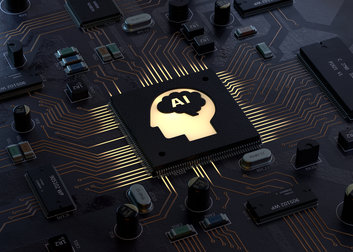
by Scott Trickey
Artificial Intelligence (AI) and Machine Learning (ML) are already a part of our everyday life. They are used when we write a text and predictive word selection auto-corrects it to something not intended. When uses of AI/ML are expanded, the potential suggests that Skynet (of Terminator fame) is lurking somewhere over the horizon.
In the typical work environment, AI and ML offer fantastic capabilities that analysts can exploit to gather data quickly and display it in optimal ways. They can adapt best business practices aligning with corporate viewpoints as well as antedate other trends and information not readily seen. These insights enable companies to remain competitive in their market.
In the hands of hackers, this same technology could exponentially impact the way cyberattacks are executed. Application of AI and ML with nefarious objectives means systems could learn to anticipate and maneuver around static firewalls. Reports suggest there are 244 new threats per minute and 30 percent are Zero-Day or never before seen. Compound this fact with the addition of AI and ML usages, and websites could be bombarded, making those statistics skyrocketed.
To combat these attacks, companies will have to employ their own computers equipped with AI and ML to anticipate and counter each attack. It reminds me of two foes in constant building mode in the online video game Fortnite seeking to gain higher ground as an advantage (if you don’t understand the reference ask a teenager). As one system gains the knowledge of its adversary, the other will counter. Thus, the battle begins.
It is easy to see from this particular vantage point how Skynet is plausible. Hacking, intrusions and vulnerabilities in the hands of cybercriminals could theoretically explode. If computers are able to attack and counterattack, what could be next? While AI and ML have phenomenal uses, we must recognize that the opposite is possible as well.
Scott Trickey is a Senior Executive Assistant at Electrosoft.